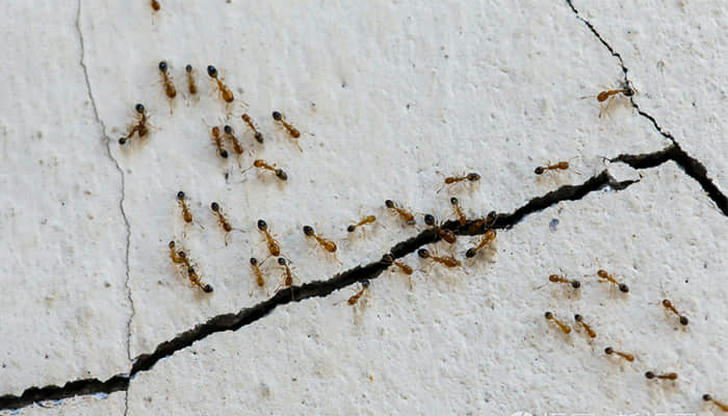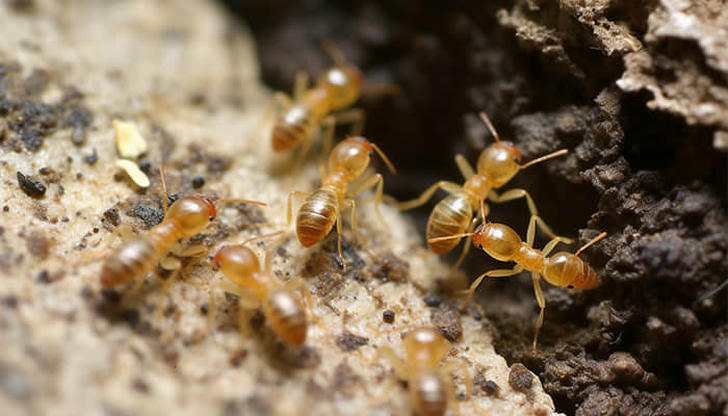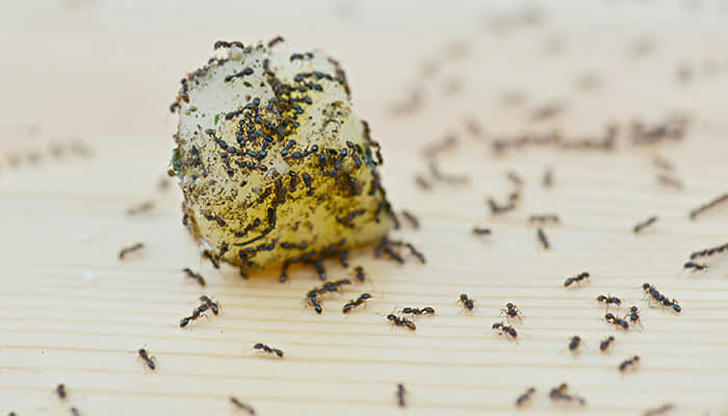DIY Ant Prevention Tips: How to Keep Ants Out of Your Home and Yard

Ants are social insects that live in colonies, and they are constantly on the lookout for food and water sources. They can invade your home through the tiniest cracks and crevices.
So, whether you're dealing with a current ant infestation or simply want to prevent one from happening, our DIY ant prevention tips will equip you with the knowledge and techniques to keep ants out of your home and yard. Say goodbye to those unwelcome intruders and regain control of your living space.
Signs of ant nests in your home and yard

Ants may be small, but they sure know how to make their presence felt. If you've spotted a few wandering around your kitchen or marching in a neat line on your patio, chances are they have established a cozy nest nearby. These tiny invaders are skilled architects, creating intricate colonies where they can thrive and expand their ranks.
To effectively deal with ant infestations, it's crucial to identify the signs of their nests in and around your home. Here are some telltale indicators that ants have set up camp in your living space:
Ant Trails: If you notice ants marching in a steady line, it's likely that they are traveling between their nest and food sources. These ant trails can lead you straight to their colony's location.
Piles of Dirt or Sawdust: Some ant species, like carpenter ants, create nests in wood by tunneling through it. If you spot piles of dirt, debris, or sawdust near wooden structures, it might be a sign of an ant nest.
Rustling Noises: Ants are busy creatures, and you might hear faint rustling or tapping sounds coming from their nest if you listen closely.
Swarms of Winged Ants: During their reproductive phase, ants produce winged individuals that leave the nest in search of a mate and a new nesting site. Spotting swarms of winged ants around your home could indicate an established colony nearby.
Visible Nest Entrances: Some ant species construct nests with visible entrances, such as small mounds or holes in the ground. Keep an eye out for these signs in your yard.
Ant Activity near Food Sources: If you consistently find ants around your kitchen or pantry, it's a strong indication that they have established a nest nearby to access those food sources.
Unpleasant Odors: Some ant species release a pungent odor when threatened or disturbed. If you detect an unusual smell around a particular area, it might be a sign of an ant nest.
Unexplained Damage: Certain ants, like carpenter ants, can cause structural damage to wooden elements of your home. If you notice unexplained damage to wooden beams or furniture, it's essential to investigate further.
DIY Ant Prevention Tips for Your Home

Now that you're aware of the signs of ant nests in your home and yard, it's time to take action and prevent these pesky intruders from making themselves at home. With our practical and effective DIY ant prevention tips, you can create an ant-free environment and regain control of your living space. Let's dive right in:
Seal Entry Points: Ants can squeeze through even the tiniest cracks and gaps in your home's exterior. Inspect your doors, windows, and foundation for any potential entry points and seal them using caulk or weatherstripping. This simple step will greatly reduce the chances of ants finding their way inside.
Keep Your Home Clean: Ants are attracted to food and water sources, so maintaining a clean living environment is crucial. Wipe down countertops, sweep floors, and promptly clean up spills. Remember to store food in airtight containers and regularly empty your trash cans.
Eliminate Standing Water: Moisture is a magnet for ants, so fix any leaks or sources of standing water in and around your home. Ensure your plumbing is in good condition, repair dripping faucets, and consider using dehumidifiers in damp areas.
Trim Trees and Shrubs: Some ant species use tree branches and shrubs as highways to access your home. Trim back vegetation that comes into contact with your house to minimize the chances of ants finding their way in.
Remove Attractive Food Sources: Ants are relentless foragers, so make your home less appealing by eliminating accessible food sources. Clean up crumbs, spills, and pet food bowls promptly. Consider storing ripe fruit in the refrigerator and placing garbage cans away from the house.
Create Barriers: Create physical barriers that deter ants from entering your home. For instance, sprinkle a line of food-grade diatomaceous earth or cinnamon near entry points, as these substances are natural ant repellents. You can also use adhesive barriers, such as double-sided tape, to block their path.
Use Natural Repellents: Ants dislike certain strong scents, so try using natural repellents like peppermint oil, vinegar, or citrus peels. Simply dilute these ingredients with water and spray around entry points, windowsills, and other ant-prone areas.
Deploy Bait Stations: Set up ant bait stations to lure ants away from your home. These stations contain a mixture of attractive bait and slow-acting insecticide that the ants carry back to their nests, effectively eliminating the entire colony. Place the bait stations near entry points and along ant trails.
How to Kill Ants in Your Yard

Anthills in your yard can be a real eyesore, not to mention the havoc ants wreak on your outdoor dining experience. But fear not! If you're dealing with localized ant problems, like those pesky ants along your sidewalk, spot-treating the area with an outdoor insecticide can work wonders. Both liquid and granular insecticides are effective in getting rid of ants. For more significant ant infestations, especially in larger areas of your yard, a powerful solution is using a lawn and garden insect killer containing bifenthrin as the active ingredient. This potent spray not only targets ants but also takes care of other bothersome insects (always refer to the label for a comprehensive list).
Here's a step-by-step guide to reclaiming your yard from ant invasions:
Mow the Grass: Before applying the insecticide, give your yard a good mow to ensure even coverage and better penetration.
Spray the Insecticide: Thoroughly apply the insecticide to the entire lawn, including shrubs and trees if ants have spread that far. For optimal results, choose early morning or late afternoon when ants are most active. And remember, it's best to spray on a calm day to prevent the insecticide from drifting.
Keep an Eye Out: After about six weeks, check your yard for any lingering ant mounds. If you spot any new ones, it's time for another treatment. The insecticide's effects last up to six weeks, so reapplying will ensure long-lasting ant control.
It's important to note that not every ant in your yard needs to be eradicated (some are beneficial to the ecosystem). However, this DIY ant prevention approach will significantly reduce their numbers and eliminate those pesky mounds that disrupt your yard's beauty.

